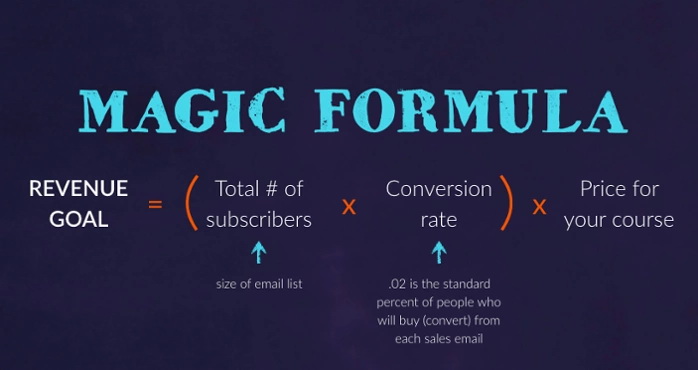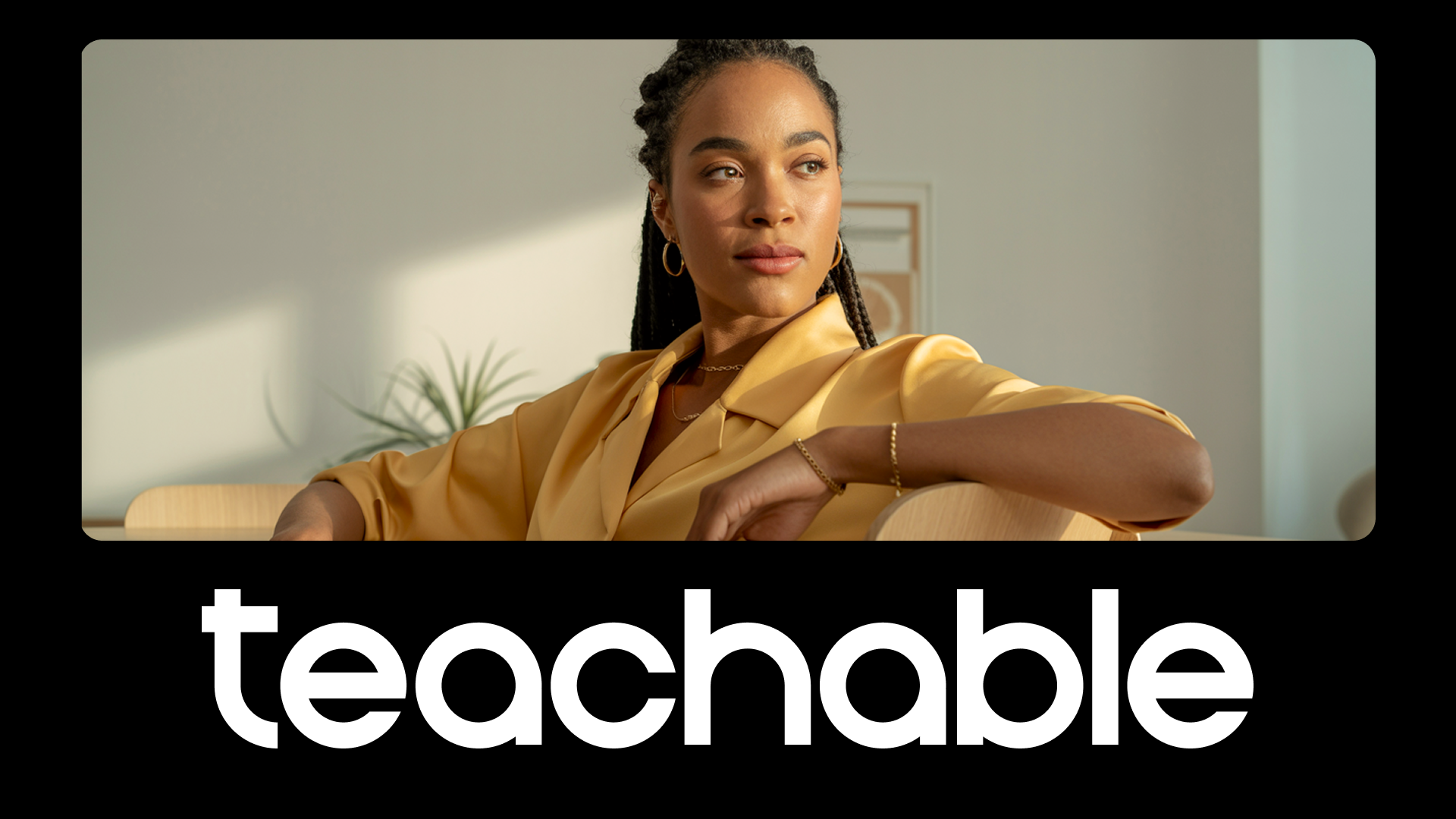Large email lists are a powerful tool when it comes to growing an online brand and selling products, but they aren’t the only way to have a successful launch. You can use an existing blog or social media audience to sell your online course, even if you haven’t devoted any time to growing your email list yet. Here are the best tips for launching an online course with a blog.
Growing your email list
Your email list should be a priority because, unlike other channels, it’s 100% yours. Unlike social media sites where algorithms change and platforms go out of style, your list is comprised of people who specifically opted in for you and will be more likely to stick around and care about what you have to say.
You have control of your list and you’re in charge of who sees what when. If you are promoting your new course you’ll know that your entire list will have an email from you at the top of their emails every morning. No annoying algorithms bumping you down or hiding your messages.
Plus, when you look at email versus paid marketing, email still comes out on top. Instead of paying heavens knows how much hoping the right person will see your ad and buy, you can send an email to people who have already qualified themselves as the right people and know they will be more likely to buy.
Growing your list isn’t all that hard, either. By implementing a few key strategies you’ll have a massive list in no time.
Give something away for free
Growing your email list is as simple as giving a high-value resource or lead magnet away for free. This resource should be related to what you’re trying to sell and be behind a gate so that people are forced to give you their email in exchange for the high-value resource.

Types of resources:
- Ebooks
- Mini-Courses
- Checklists
- Shopping lists
- A video series
- Exclusive interviews
- Free templates
- Etc.
Now what?
Once you’ve grown your email list you can refer to this post when it comes time to launch your product and take a quick look at the steps I’ve mentioned below.
Your email list = gold for launching your online course.
Launching to your list
We dont’ want to harp too much on launching to your list in this post, but whether you want to or not, make sure you take advantage of the 4 weeks of blog posts to insert content upgrades so you can collect email addresses.
If you do, you’ll probably find yourself with a sizeable list when it comes time to launch, and that’s when you should consider launching using our Crazy 8 Launch Strategy.
It’s likely that a lot of the people who sign up for your upgrade will only ever go to your blog that one time, but you can still get them to buy despite that if you’ve got their email address. To really launch to your full potential, include your email list in the launch strategy.
It’s safe to say that around 2% of your list will convert, so even if you only have 200 people signed up, that’s still 4 more sales than you would have otherwise had, and if your course is $250 that’s another $1000 in your pocket. Not bad, right?

Launching with a blog
Launching na online course with a blog can be a tricky starting place for those who have never done it.
Here is our writer, Morgan Timm’s take,”When I started blogging I didn’t care about email lists. I monetized through collaborations rather than selling my own products and I was waaaay late on the email list game. It’s something I regret, but also something I learned from.”
Though it’s not as ideal as launching an online course to your list (noticing a theme here?) you can have a really successful course launch using your blog as your launching platform. Here’s what you’ll need:
- An active blog covering a topic related to the product you’re selling
- An at least somewhat engaged audience (we’ll work on reengaging them!)
Simple enough, right?
The game plan:
Launching an online course with your blog means you’re going to need to have an audience that checks your site regularly and knows what to expect from you.
If you’re the sporadic blogger who publishes whatever is on your mind whenever you feel like it, you’ll need to tighten the reigns a bit so your audience will be “trained” in what to expect from you.
Your goal is to position yourself as an authority on the topic of your course, and make your audience eager to learn more. This means creating a mix of informative and storytelling content that is long form and high value.
Weeks one and two:
These first two weeks we are going to work on educating your audience on the topic you are teaching. Here is where you’re going to put your course topic on their radar and let them know why it’s important.
Let’s say you are teaching an online course on how to transition from the standard western diet to veganism.
Your first week might look like this:
- Tuesday Post: 10 Reasons Why I Went Vegan. Whether you primarily blog about veganism or not, now your audience is going to know you are vegan, that you have reasons for going vegan, and if they are in your target audience they are probably eager to hear more.
- Thursday Post: 5 Easy Vegan Swaps. This post is starting to educate your audience on how they can make easy changes to go vegan, too. So now they know why you’re vegan, and they’re beginning to see you as a resource they can go to if they want to be vegan, too.
Week two:
This is going to be a bit more aggressive, you really want your audience to see you as the vegan authority so you’ll have to up your ante. Before you plan out your blog posts here, decide what key benefits your course is going to offer and make it clear that you’re able to deliver those benefits into your blog posts.
To stick with our going vegan example, we’ll say that our benefits are helping people lose weight and live healthier. With that in mind,
Here are the week two blog posts:
- Tuesday Post: How I Lost 30 Pounds by Going Vegan. If you are aiming to help people lose weight by changing their diet with your online course, give them proof that not only can it be done, but you’ve done it yourself! This post should be general but informative. Let them know your before and your after, but don’t give away all the secrets in the middle. You want them to feel satisfied but still have questions.
- Thursday Post: DIY Vegan Holiday Feast. A lot of people might be wondering how they can possibly stay vegan during the holidays so this post is going to help them by breaking down vegan takes on holiday classics. No matter what your course is on, this post should be in depth and informative, and at least a week or two away from your launch so that it has time to gain momentum on social media.
Weeks three and four:
During weeks three and four you are going to announce that you’re working on a course, start increasing your interaction with your audience and continue positioning yourself as an authority.
Week three is where you’re going to tease your course while still remaining informative. Let your audience know that it’s in the works, and you can even take this time to ask them what they’d like to see.
- Tuesday Post: The Ultimate Guide to Veganism. Let your audience know that you’re embarking on creating the ultimate guide to going vegan and you’d love to know what they’d like to see in the course. Open your post with something along the lines of, “I’ve been keeping a secret from you guys. For the past few weeks I’ve been working on a project every free moment I had and I’m finally ready to let you guys know what it is.” To ensure this post is still valuable, include something like the top ten benefits you’ve seen since going vegan.
- Thursday Post: The Complete Guide to Cooking with Tofu. This post is going to be a teaser for your course. Open it by saying, “I originally created this post as a module for my online course, but I’m so excited about it I wanted to share it with you all now.” This post needs to be killer. I’m talking the best post you’ve ever written killer. Include video elements and maybe a content upgrade like a recipe sheet or something of the sorts.
Week four is launch week
Your main goal is to get people to buy, so you’re going to announce you are launching an online course and start sharing “teasers” like you did in last Thursday’s post.
- Tuesday Post: My Course is Live! Here is where you’re going to open the doors so people can begin to buy. Open with, “As you might already know, I’ve been working my rear off on my Veganism Course for the past few weeks and it’s finally ready.” Use this post to post behind the scenes screenshots of your course content.
- Thursday Post: The Top 5 Resources for New Vegans. This is a post that’s going to be highly shareable on social media and generate a lot of buzz. You’ll want to compile resources that compliment your course rather than compete with it.

Promoting your blog posts
A lot of people have an “if you build it they will come” mindset when it comes to blogging, but the truth is you’ll need to be doing a lot of promoting so you can get your posts, and thus your course, to be seen by a large audience.
There are a few main platforms you should be promoting your posts on,
Here are some of our favorites
- Facebook: Facebook is great because you can have your very own page for your blog or business. There are also a ton of groups you can join for just about every topic under the sun. In addition to promoting on your page when you publish, find relevant groups that allow self-promotion and post your recent blog there, too.
- Twitter: Morgan wrote all about using Twitter to promote your online course in the past, but the gist is be active, be valuable, and don’t go overboard with self-promo.
- Instagram: If you’ve already got a decent following there, it can’t hurt to let your audience know about your new posts and your new online course. Use relevant hashtags and interact with others in your niche.
- Quora: We honestly believe that Quora is the most underrated platform. You can use the platform to harness unbelievable traffic. It’s all about answering questions early. It’s hit or miss when it comes to deciding which questions will be popular and which won’t.
- Pinterest: We love Pinterest so much and Morgan does too. She poured my heart and soul into creating what may just be Morgan’s favorite blog post. It walks you through what works, what doesn’t, and how you can implement Pinterest to grow your online business.
{{buildcommunity-component="/blog-shortcodes/blog-cta"}}
Join more than 150,000 creators who use Teachable to make a real impact and earn a real income.


.png)
.png)



